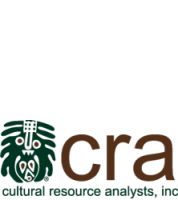
02 Jul Sayre School, 1998-1999
During the second school year (1998-1999), a new proposal was developed for further testing of the site. Our research questions for this phase of the project were to (1) determine the stratigraphy and depth of deposits, the degree of disturbance in the back yard, (2) identify structural remains, and if possible, determine the age and possible uses of any located structures. The proposal included excavating 6 1-x-1 meter units in the back yard, with their locations based on information obtained the previous year, including the remote sensing, artifact density maps and topographic observations. Our units were placed along the back yard fence line, where artifact density was high and the ground surface had contours that looked suspiciously square. The other two units were placed in areas near a well where ceramic artifact density was high.
Preparation for Excavation
Again, prior to excavation, the teachers were given a Teacher’s guide to help their students prepare for their experience. When the students first arrived on the site, they were given an orientation tour, a description of their work duties, and then were assigned to their units. The students excavated their units in 10 cm arbitrary levels, keeping the units surface level, using small shovels and trowels. Students were taught to shovel skim, trowel, screen their artifacts, and take measurements. They were also responsible for note taking. When needed, supervisors showed students how floor plans were drawn. During the day, each group in turn was shown how the transit worked by shooting in their units. By the end of the day, the students had excavated 20 cm in each unit.
Excavation
The excavations, although not extensive, were informative in providing information on the possible locations of structures. Units placed near the well indicated that the stratigraphy was not deep, and there was little architectural debris. Units placed along the fence line at the rear of the house lot had a deeper stratigraphy. Of significance was the large quantity of structural debris, including limestone, nails and window glass that suggested the presence of a structure. Domestic artifacts, including ceramics, tableware and container glass was abundant. The artifacts at the upper levels were somewhat mixed, but the age of the window glass and nails suggested that the structures dated from the early to mid-nineteenth century. Time limitations prevented additional unit excavation.
Supervisors reviewed the findings in each unit with each excavation team. A student was then chosen from each group to present their findings. The students were queried with regard to the profiles of their units, the relevant artifacts they had uncovered, and their suggestions on future research at the site.
Final Discussion
The students returned to the classroom for a discussion about artifact identification using artifacts from the CRA comparative collection. The students began a write up, each unit group evaluating what they excavated. CRA employee Dr. McKelway returned to the classroom to discuss their reports upon completion. The final discussion of reports concluded year two work at Waterwild Hall for the students and was an important part of the overall learning experience.



